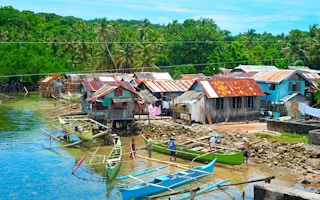The existing debate about climate finance tends to start from the wrong end. Most of the attention has been focused at the international level and on how international finance must flow. This is important in terms of the historical patterns of greenhouse gas emissions, but it has created a bias.
Taking a bottom up perspective
We argue that climate finance should start at the bottom with the users of this finance – in other words poor women and men. By starting at the bottom, the architecture of climate finance will put those who need it most at the centre.
Why should we start at the bottom?
Household spending by poor women and men is likely to be the largest source of climate-related expenditures in developing countries. That is to say, the costs of dealing with the changing climate, whether these are the costs of reducing the risks of crop failure (by investing in new varieties for example), the costs of putting the pieces of your life back together after your home has been flooded, or the costs of relocating your family to somewhere less vulnerable to sea-level rise, all fall on the individuals involved.
Investments can help families to adapt to the changing environment. A new solar-powered irrigation pump can help a farmer cope with the lack of rainfall. New products, or investment in new technologies can make a difference.
Access to solar energy can also help in rural areas that are off the main electricity grid. But new products and new technologies have a cost – and that cost is hardest to meet for the poorest families.
How do we start from the bottom?
“
By spending much more time and effort understanding how poor people are already responding to climate change, and what these costs are, the appropriate national and international architecture can be designed to support and empower those vulnerable families who face climate change on a day-to-day basis.
While it is clear that these costs exist, there is a need for much more analysis and research to understand the kinds of expenditures being made by poor households to identify the gaps and constraints. Ongoing household expenditure surveys need to better integrate analysis of these climate-related expenditures to build up a more robust dataset.
Further research is also needed to understand the finance needs of different groups within society (low-income, subsistence or extreme poverty) and this breakdown of the data will be crucial to understand how climate finance can target the uncatered for poor in an appropriate way.
What will be the result?
By spending much more time and effort understanding how poor people are already responding to climate change, and what these costs are, the appropriate national and international architecture can be designed to support and empower those vulnerable families who face climate change on a day-to-day basis.
A greater focus on poor people and a bottom-up focus on climate finance is likely to lead to more attention being paid to how existing support at the local level can be leveraged. Existing forms of social protection could provide channels for climate finance management and for delivery.
Many of Bangladesh’s social protection schemes, for example, already support climate vulnerable households, while in India, the Rural Employment Guarantee Scheme provides jobs to clean up ecosystems and invest in climate resilient infrastructure. These social protection schemes are already providing an innovative delivery channel for the flow of climate finance.
Many of those living in extreme poverty however are often not reached through these existing, business-as-usual channels and therefore may require alternative means of support including new kinds of social protection programmes, disaster relief, or support for grassroots initiatives such as community savings funds. IIED’s recent research on public and private sector roles in financing pro-poor energy access reflect how poor often require a targeted bottom up approach which remain uncatered otherwise.
A role for local government
Local government is already at the forefront of supporting citizens, providing local level infrastructure such as roads and managing local natural resources, making it ideally-placed to play a key role in supporting poor households to adapt to climate change.
For example, many natural resources, such as water, are coming under increasing pressure from climate change. Local governments can manage the risk of conflict and encourage sustainable use, as illustrated by the work done by commune governments in Cambodia.
Local roads need to be climate proofed and constructed with environmentally friendly technology so they do not wash away every rainy season, as used to happen in Nepal. Local governments also can provide seed funds for local level energy infrastructure such as off-grid hydro and solar technology. Channelling climate finance through local government can provide an effective way to help poor households adapt and mitigate climate change.
Harnessing innovative public sector efforts
Countries have already begun investing through innovative instruments targeting the most poor. Special purpose agencies have been set up by some countries to ensure finance builds resilience among the poorest.
The Infrastructure Development Company Limited (IDCOL) in Bangladesh is one such example. It has provided 2.5 million solar home systems and, despite initial criticism for excluding the poorest, changes to policies – including offering low interest loans and smaller cost-effective products – have changed that. Small-scale solar schemes were distributed to around 83 per cent of people living below the poverty line in one area (PDF).
In some countries, National Development Banks have also developed green refinancing schemes to provide adequate and appropriate finance through green credit lines – as discussed in a recent IIED workshop on energy finance.
The way forward
There are then many opportunities to improve support for the poorest in adapting to climate change – and much useful work is already being done.
But the real need is that poor women and men are empowered to engage in debates and delivery for climate finance – and that their participation becomes the norm for finance planning, delivery and monitoring.
Paul Steele is IIED’s chief economist and Neha Rai is senior researcher in the Climate Change Group. This post is republished from the IIED blog.


















